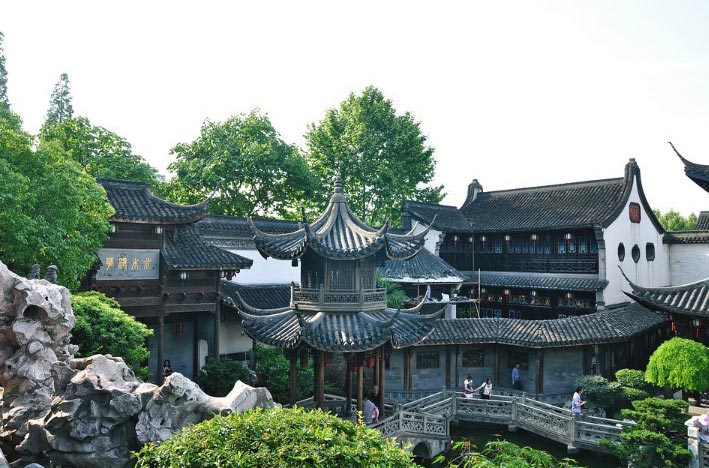
In 1999, the residence of Hu Xueyan was designated as a historical relic under the protection of Hangzhou city, and the renovation of the buildings began. Hangzhou invested 29 million yuan to renovate this typical Huizhou architecture. During the renovation, many high-quality building materials such as red sandalwood and nanmu wood (Phoebe nanmu) were used. In January 2001, the renovation project was completed, and Hu's residence regained its original appearance, including exquisite brick, wood, and stone sculptures. (GMW.cn)
Hu Xueyan (1823-1885), was a local celebrity in Hangzhou, east China's Zhejiang province. He was one of the richest and most famous businessmen in Qing Dynasty.
Hu started his career in his early youth as an assistant in a private bank and later established his own business with support from the governors and friends. Based on private banks and pawnshops, he expanded business in to fields such as food, silk, medicine, etc. He donated much money and gave mush assistance to the Qing government and was therefore allowed to wear a red cap and cited as an honorary official.
The construction of Hu Xueyan's residence began in 1872 (the 11th year of the reign of Emperor Tongzhi in Qing Dynasty) on Yuanbao Street in Hangzhou and lasted for three years. The residence spans an area of 10.8 mu (one mu equals 0.0667 hectares), with construction area of 5,815 square meters. It is said that the whole construction cost 3 million taels of silver.
The house is a complex of more than 20 buildings in the typical landscape style of the south of Yangtze River and an excellent example of the magnificent residences of the late Qing Dynasty. It was built in traditional Chinese style, with many pavilions, terraces, bridges, verandas, rockeries, all ingeniously designed. Fine brick engraves, wood engraves, stone graves are scattered many where. Many high class trees like purple sandalwood, gingko are planted in the courtyard.
The rockery in the Zhiyuan Garden is the largest artificial karst cave in China. In addition, the splendid house was built using a great quantity of high-grade timber, such as red sandalwood, nanmu, ginkgo, hoop pine and Chinese beech.
